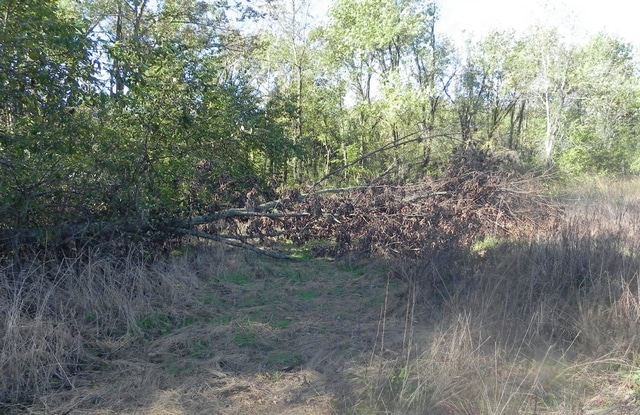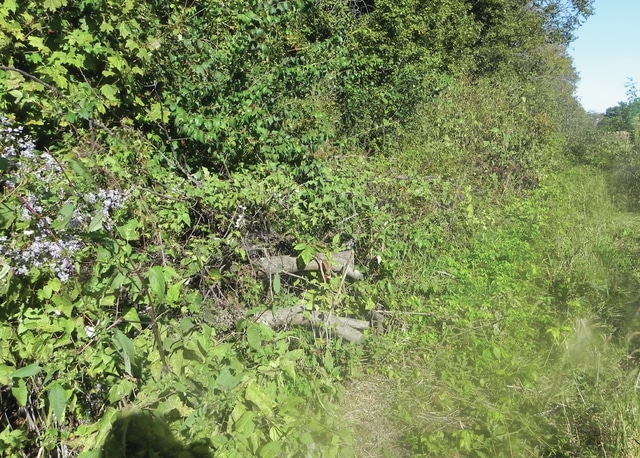

By Larry Moore
Moore Outdoors
There is no question that habitat is the most important element for wildlife survival. Biologists typically list habitat loss as the most significant factor in wildlife population declines. Few species have suffered more from habitat loss than the Northern Bobwhite Quail. The loss of fencerow habitat is a major factor in the decline of the Bobwhite Quail. They were especially hard hit during the severe winter blizzards of the late 1970s and seem to have never recovered to previous population levels.
Ohio is not the only state experiencing a decline as biologist in other states are also very concerned about the population levels. The ODNR Division of Wildlife has conducted quail call surveys since 1985 in 29 southern Ohio counties. This provides population indices, an abundance index (average number of calling males heard per survey stop) and a distribution index (proportion of stops with quail). Unfortunately the results of the survey have confirmed the severe drop in quail populations. In 1984 the number of quail per stop was in the upper thirties but by 2014 that number was well down into the single digits. The Fallsville Quail Heritage Area with intensive habitat management is an effort to reverse the decline of the quail and stabilize the population.
Division of Wildlife Fallsville Area Manager Ronnie Adams and Private Lands Biologist (now retired) Heidi Devine explained the focus area for quail management. It combines the public land of Fallsville Wildlife Area, 1761 acres along with 8171 private land acres. The combination provides a concentrated area for management efforts. Quail are not migratory birds so they need the contiguous areas and travel corridors. The project needed to be in an area where quail populations are established. Highland County, which is the first area in Ohio, was chosen because the quail are there plus the habitat base. Devine added, “This area is a stronghold in the state quail population.”
She explained, “We always go back to the historic landmark of quail and fencerows. When people had small farms every family had livestock and needed fences. Grain farming practices have changed so farmers feed more people on less land. Eventually the fences were abandoned and removed as they were no longer needed. We need this partnership to create the habitat that was lost. Farmers are working with us for the benefit of wildlife. They are excited to hear the call of the bobwhite quail.”
The first phase was a research project which started in 2008.This was to determine the range of the quail along with a habitat analysis. Students from OSU preformed research to track the movement of the birds. The ongoing research provides data on which type of habitat the birds were using and when they were using it. The next phase was to reach out to area landowners about the project. It was an educational effort about the project but also to get landowner input. The local farmers responded by providing additional data where they see or hear the quail.
Devine comments, “There has been great reception from the private landowners. We’ve held educational meetings and some field demonstration days on some properties. We are educating the property owners on the project, what is the desirable quail habitat, how it is developed and what are the benefits. The project provides technical assistance and encourages the landowners to participate.”
The goal is to put ground nesting cover plus food and travel cover in close proximity since the quail use different cover habitats during different seasons. This is key to any success. Quail don’t tend to travel far if they have what they need. They get in trouble when one component is missing. Forcing quail to travel farther leaves them more exposed to predation. There must be good habitat. That reduces the chances of predation. Winter cover and food supply is so critical to the quail since they do no migrate. This is where the edge feathering plays an important role providing cover that is close to a food source. Edge is critical to many species that also benefit in addition to the quail.
Edge feathering takes out the edge of the field which is often the least productive for the farmer. It replaces the crop with protective cover which also filters the water. Planting proper ground cover benefits a lot of wildlife. It’s a win-win. The edge is, in effect, replacing what used to be a fencerow. Trees may be dropped along the edge to provide additional protection for the quail.
Adams explains, “The research and focus area project required extensive partnerships. These included the ODNR Division of Wildlife, Pheasants Forever/Quail Forever, National Resource Conservation Service, Highland Soil & Water Conservation District; the City of Hillsboro and others. The habitat work is cooperative effort with local landowners. The project provides the technical assistance and encourages farmers to utilize the farm bill programs for the financial incentive. The project funding paid for the work on the private property to accomplish the edge feathering. The landowner had only to provide the access to the habitat. The goal is to develop better land management practices and stewardship in the focus area. This will also help to protect the water supply for the City of Hillsboro.”
The states, where there are quail populations, are working together to determine a better management method. The plan is to continue focus areas for a concentrated management approach. These combine both private and public lands to maximize the impact. The improved habitat also benefits pollinators which are facing a lot of challenges, as well as, songbirds and other small game. The project offers great prospects for the future but the work is just beginning. The intensive management in a focus area is a different approach in Ohio. Other states, which started earlier than Ohio, are showing positive results. If the Fallsville effort produces similar results then the approach can be applied in other areas and perhaps to other species. Hopefully the call of the Bobwhite Quail will be heard with greater frequency well into the future.




